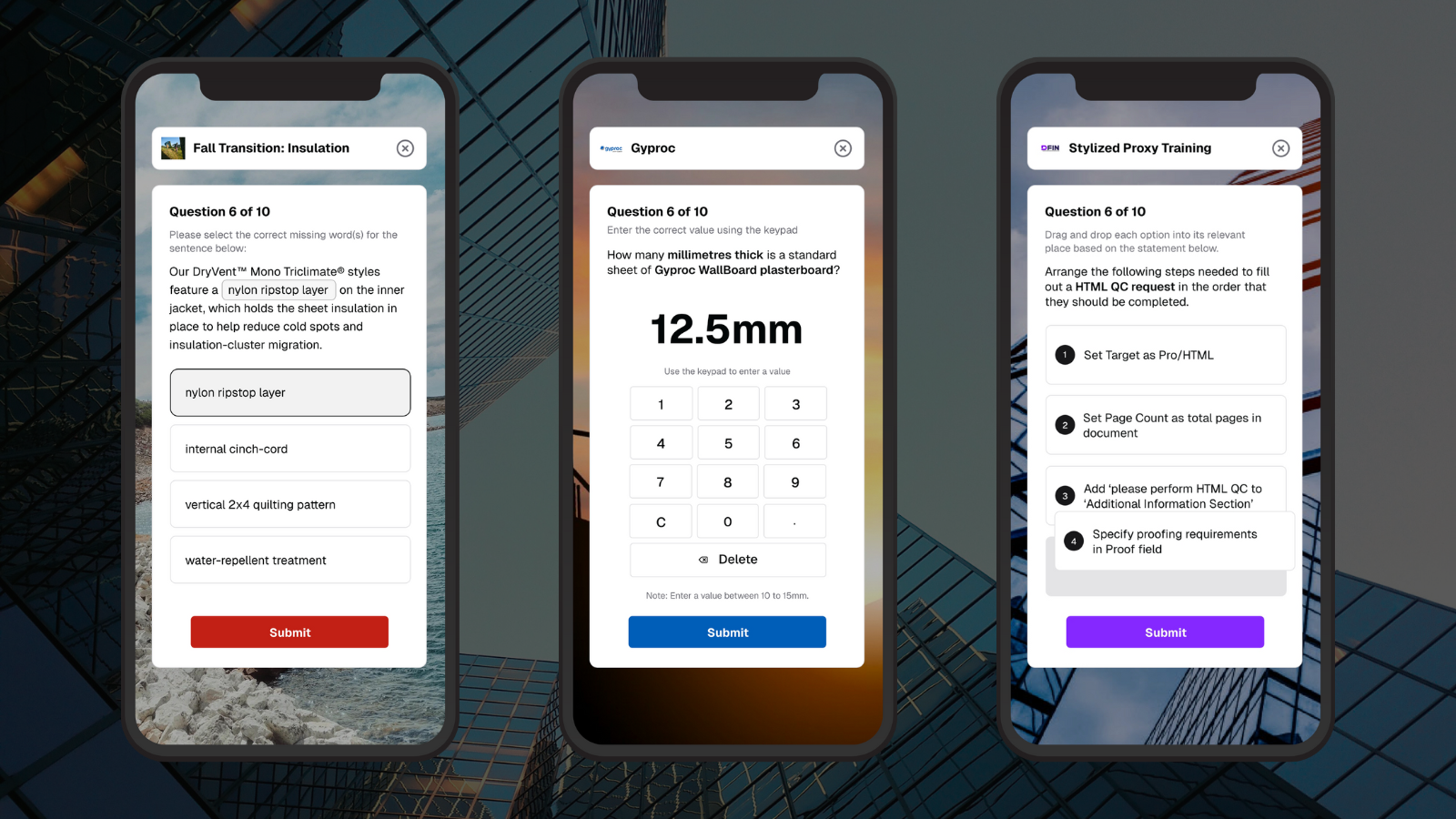
What Is Blended Learning? Combining Online and Offline Training
In the context of the corporate environment, ‘what is blended learning’ is a question we get asked a lot.
So, in this post, we thought we’d give you the lowdown on this increasingly popular workplace teaching method.
What is Blended Learning in the Workplace?
Blended learning is an approach to employee training that combines traditional face-to-face teaching methods with online methods of gaining knowledge.
Sometimes referred to as Hybrid Learning, it has become increasingly popular in the last few years on account of it being perceived to be a more beneficial way of learning than traditional teaching within a classroom setting.
Typically, blended learning requires companies to use tools such as a learning management system, which facilitates both instructor-led events and online courses.
It operates on the principle that the more you can expose knowledge to people in different ways, the more they will likely absorb, retain, and apply it to their daily work practices.
What are the advantages of Blended Learning?
The blended learning model is perceived to have many benefits for both the employee and the organization. They include the following:
- Enables employees to learn at their own pace and enjoy better learning retention.
- Encourages collaboration through peer-to-peer training
- Increases the effectiveness of training programs by adopting different elements
- Makes it easier for staff members to learn on the job
- Minimizes training costs by reducing the need for training facilities and instructors
- Provides employees with a flexible approach to learning
- Staff can undertake training activities based on their own schedule
What are the Different Types of Blended Learning Models?
As its name implies, the blended learning method of training isn’t a rigid or uniform solution. Instead, this approach has four different models that companies can base their training initiatives around.
They include the following:
1. Blended Learning Flex Model
By combining online learning activities with traditional face-to-face instruction, this model allows learners to alternate between digital learning and physical classroom training, depending on their preferences.
This enables staff to attend in-person training sessions or learn independently from a remote location, such as their desk or home, as and when required.
This method is favored by companies whose staff are self-directed learners with good technological skills and who are well versed at working within an online framework.
2. À La Carte Model
The À La Carte Model allows employees to customize their learning experience by giving them the freedom to choose from a selection of training activities and topics, which can either take place in face-to-face or online settings.
Typically, they are divided into separate elements or courses that staff members can complete at their own pace.
These activities and topics are also usually personalized to the individual needs and abilities of each individual employee.
3. Rotation Model
Companies who adopt the Rotational Model, expose their staff to different learning environments, which they complete concurrently in different rotations.
For instance, staff members might be divided into different groups, which each take turns to work their way through a range of learning environments. These might include online learning tasks, small group instruction, teacher-led activities, and independent learning stations, all of which offer individualized instructions that are based on their particular learning needs.
4. Enriched Virtual Model
The Enriched Virtual Model uses virtual classroom technologies like chat rooms and video conferencing to supplement other instructional materials, such as web resources and textbooks.
Overall, this model is designed to bring learning experiences from the real world into virtual classroom spaces through techniques like virtual field trips, virtual simulations, video conferencing, webinars, and several other online teaching applications.
In this model, employees gain knowledge in a blended and collaborative learning environment, where they get to interact with instructors, peers, and different learning materials.
Pros and Cons of Blended Learning
There are pros and cons to most things, and blended learning is no exception.
Here are some of the main advantages and disadvantages of this type of training method.
Pros:
- Blended learning helps to keep costs low by eliminating the need to procure expensive equipment and materials to run the training program.
- This approach can significantly reduce travel expenses that are otherwise involved in hiring venues and, potentially, the cost of overnight accommodation.
- As they are able to access online materials at any time, it allows your employees to partake in the training session anywhere they can access an internet connection.
- The blended learning model encourages staff members to collaborate with each other by working towards a common goal together. They can do this through an online environment, which allows them to easily share ideas, either by an instant message (which is perfect for companies that have offices worldwide) or email.
Cons:
- Some employees may not get the opportunity to socialize with their colleagues face-to-face.
- Trainers and instructors will have to be more efficient and organized with their time.
- Setting up a blended learning training program could require an allocation of a sizeable upfront investment and resources.
Conclusion
We hope this post has given you a better understanding of what is blended learning in business.
At the end of the day, ensuring your staff continually learn and stay up-to-date with the latest technologies, trends, and methods of working is a critical success factor for any company.
Implementing a blended learning approach to training can help you to get the best out of your employees and maximize the impact they have on the success of your organization.
Not only does it empower staff members to learn at a pace that suits them (whether they are in the office or working remotely), but it also raises their levels of engagement and can save your business money, too.
When you consider that employees are a company’s biggest asset, it is no wonder that so many companies are switching away from traditional classroom styles of training to a blended learning approach that has the potential to be much more effective.
FAQs
Here are some answers to questions that are frequently asked about ‘what is blended learning?’
What is blended learning in business?
In simple terms, blended learning is a form of teaching or training where content is delivered to employees in several different ways. This could include videos, surveys, podcasts, quizzes, face-to-face teaching, and live online webinars.
Overall, it is designed to provide your employees with a richer learning experience than they would otherwise get from one format.
What best describes blended learning?
Blended learning is an approach to training staff members that combines face-to-face and remote teaching with the primary objective of helping them better retain and utilize new knowledge.
Why would a company use a blended learning approach to train their employees?
A blended learning approach is becoming more popular with companies because it enables knowledge to be gained and reinforced in more than one way.
By embracing online and face-to-face learning techniques, it helps employees to more easily digest and retain in their memories what is being presented to them.


